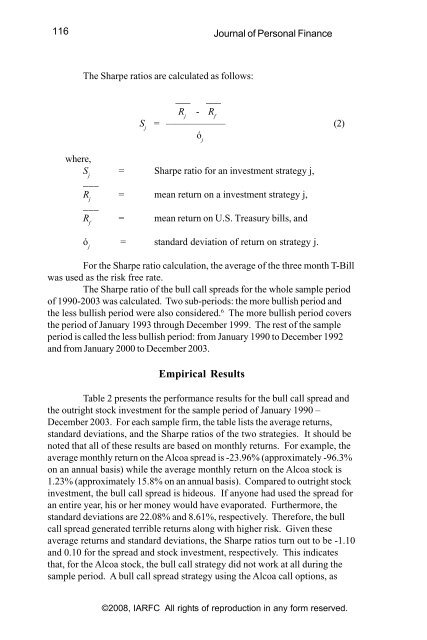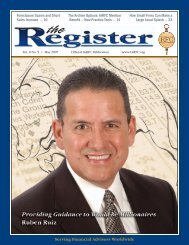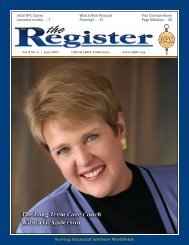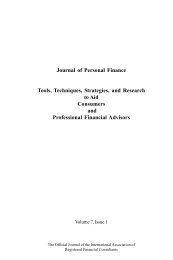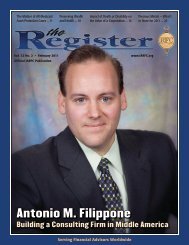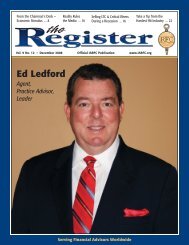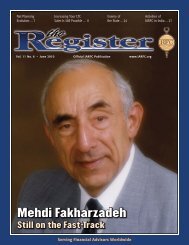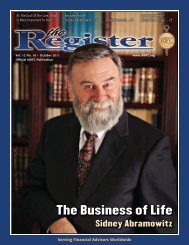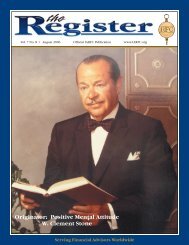3433-vol. 6 issue 2-3.pmd - iarfc
3433-vol. 6 issue 2-3.pmd - iarfc
3433-vol. 6 issue 2-3.pmd - iarfc
Create successful ePaper yourself
Turn your PDF publications into a flip-book with our unique Google optimized e-Paper software.
116<br />
Journal of Personal Finance<br />
The Sharpe ratios are calculated as follows:<br />
___<br />
___<br />
R j<br />
- R f<br />
S j<br />
= —————— (2)<br />
ó j<br />
where,<br />
S j<br />
= Sharpe ratio for an investment strategy j,<br />
___<br />
R j<br />
= mean return on a investment strategy j,<br />
___<br />
R f<br />
= mean return on U.S. Treasury bills, and<br />
ó j<br />
= standard deviation of return on strategy j.<br />
For the Sharpe ratio calculation, the average of the three month T-Bill<br />
was used as the risk free rate.<br />
The Sharpe ratio of the bull call spreads for the whole sample period<br />
of 1990-2003 was calculated. Two sub-periods: the more bullish period and<br />
the less bullish period were also considered. 6 The more bullish period covers<br />
the period of January 1993 through December 1999. The rest of the sample<br />
period is called the less bullish period: from January 1990 to December 1992<br />
and from January 2000 to December 2003.<br />
Empirical Results<br />
Table 2 presents the performance results for the bull call spread and<br />
the outright stock investment for the sample period of January 1990 –<br />
December 2003. For each sample firm, the table lists the average returns,<br />
standard deviations, and the Sharpe ratios of the two strategies. It should be<br />
noted that all of these results are based on monthly returns. For example, the<br />
average monthly return on the Alcoa spread is -23.96% (approximately -96.3%<br />
on an annual basis) while the average monthly return on the Alcoa stock is<br />
1.23% (approximately 15.8% on an annual basis). Compared to outright stock<br />
investment, the bull call spread is hideous. If anyone had used the spread for<br />
an entire year, his or her money would have evaporated. Furthermore, the<br />
standard deviations are 22.08% and 8.61%, respectively. Therefore, the bull<br />
call spread generated terrible returns along with higher risk. Given these<br />
average returns and standard deviations, the Sharpe ratios turn out to be -1.10<br />
and 0.10 for the spread and stock investment, respectively. This indicates<br />
that, for the Alcoa stock, the bull call strategy did not work at all during the<br />
sample period. A bull call spread strategy using the Alcoa call options, as<br />
©2008, IARFC All rights of reproduction in any form reserved.


